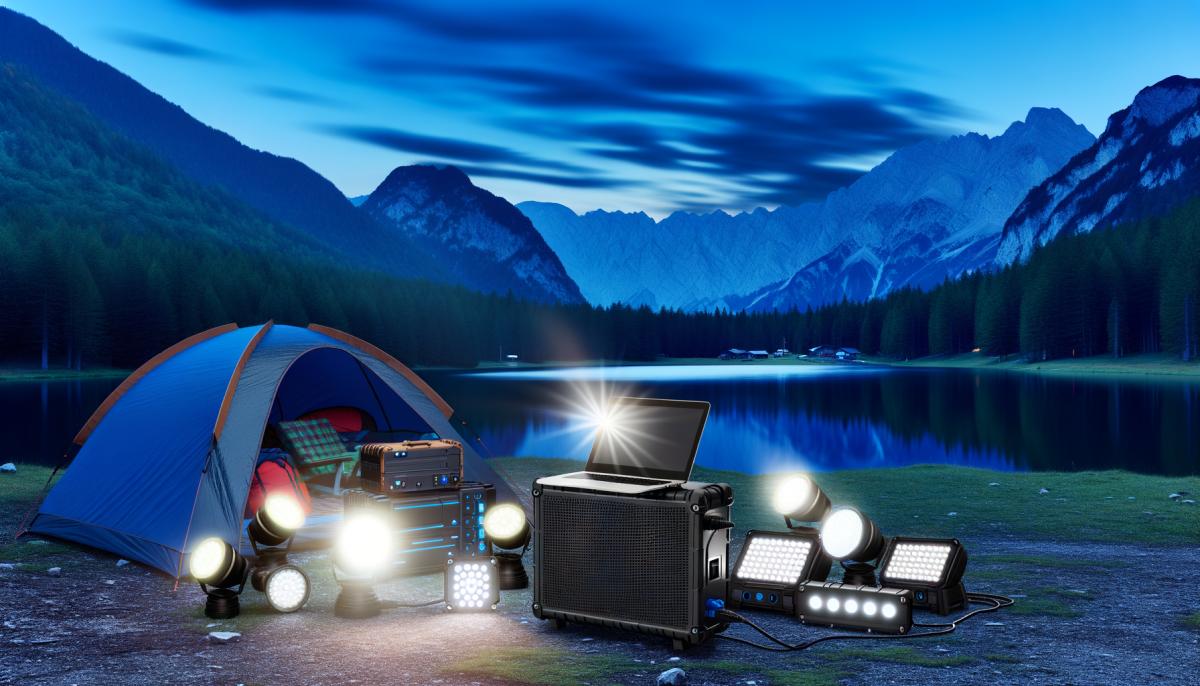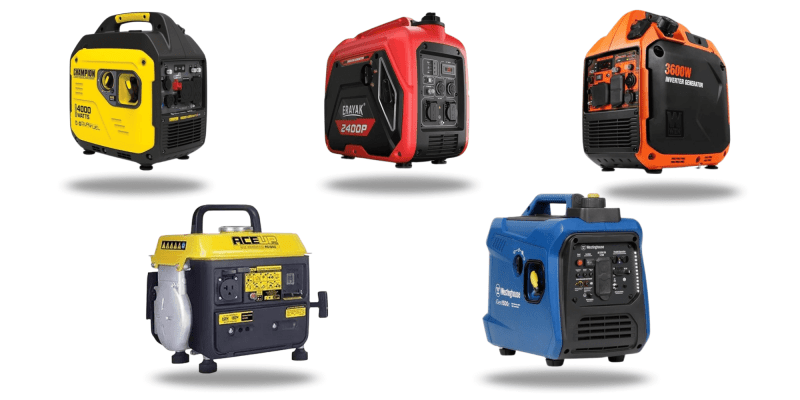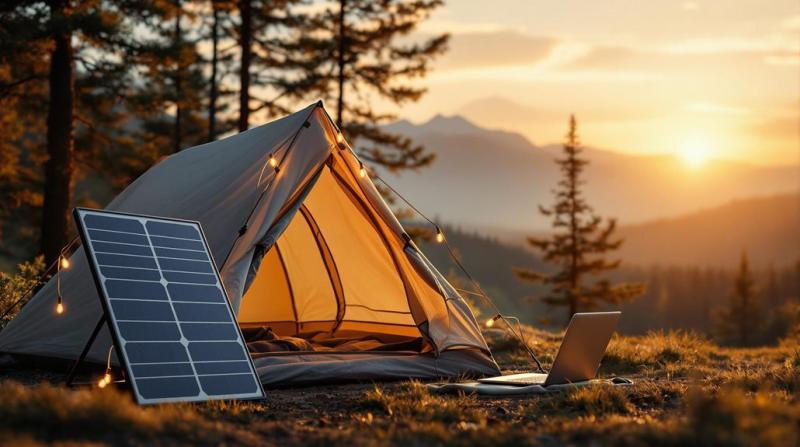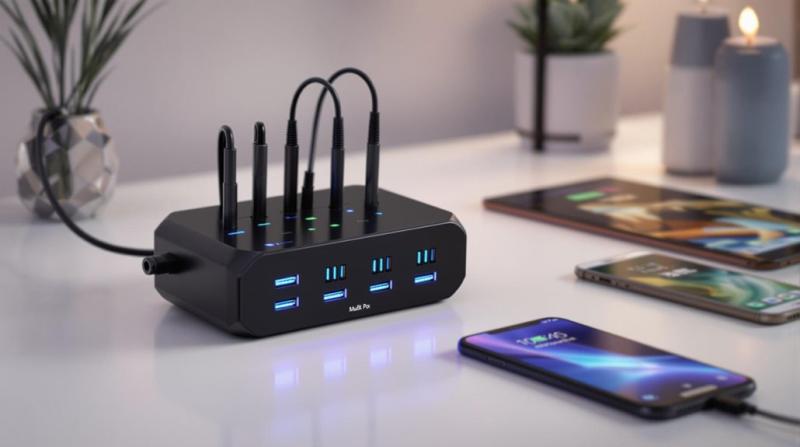Hey there! If you're on the hunt for the best portable power stations, you've definitely landed in the right place. These nifty gadgets are perfect for camping trips, emergencies, or even those long road trips where you need reliable power for all your devices.
So, let's dive in. One of the key things to look at is battery capacity. Trust me, you don't want to be caught with a dead power station when you need it most. Models like the Jackery Explorer 1000 and the EcoFlow Delta Pro are super popular for a reason—they pack a punch when it comes to power.
Now, features. You'll want to look for multiple output ports. Seriously, the more, the merrier. Lightweight designs are a game-changer, especially if you're lugging this thing around. And if it's solar compatible? Even better! Imagine harnessing the power of the sun to keep your gadgets juiced up.
Also, think about how you're going to use it. Are you a weekend camper or prepping for the next big blackout? Different scenarios call for different features.
There's so much more to discover when it comes to maximizing your portable power experience. So, happy exploring!
Understanding Battery Capacity
So, you're thinking about getting a portable power station, huh? Well, let me tell you, understanding battery capacity is super important. It basically tells you how long you can use your gadgets before the station needs a recharge. Battery capacity is usually measured in watt-hours (Wh). The more watt-hours, the longer your stuff will stay powered up. Simple, right?
Okay, let's break it down. Imagine you've got a laptop that eats up about 50 watts. If you have a 500Wh power station, that means you can keep your laptop running for around 10 hours. Not bad, right? But wait, there's more! If you also want to charge your phone and maybe run a small fridge, you'll need to add those wattages into your calculations. It's like figuring out your grocery budget—every little bit counts.
And don't forget the power output! Some gadgets, like fridges or power tools, need a big burst of power to get started. Make sure your power station can handle those demands. Look for features like pure sine wave output; it's safer for stuff like laptops and other sensitive electronics. It's like choosing the right kind of gas for your car—super important!
Top High-Capacity Models
Let's dive into some of the top high-capacity portable power stations that can keep your devices running for days on end. Whether you're camping, tailgating, or dealing with a power outage, these powerful models ensure you're never left in the dark.
First up, we've got the Jackery Explorer 1000. This bad boy comes with a massive 1,002Wh battery, letting you charge multiple devices at once. Need to power a mini-fridge or juice up your laptop? No problem! Its versatility and portability make it a favorite among outdoor enthusiasts. Oh, and it's solar panel compatible, so you can recharge it sustainably.
Next on the list is the Goal Zero Yeti 1500X. This beast offers 1,500Wh of power and sports a variety of ports, including USB-C and AC outlets. Its robust design lets you run high-demand devices, making it perfect for long trips or emergency backup. Plus, the user-friendly interface and built-in Wi-Fi for remote monitoring really set it apart.
Then, there's the EcoFlow Delta Pro, which boasts an impressive 3,600Wh capacity. Ideal for off-grid living or extended outdoor adventures, it features fast charging capabilities and can power heavy-duty appliances. Trust me, you won't run out of juice when you need it most with this one.
Lastly, take a look at the Bluetti AC200P. With 2,000Wh of capacity and a wide array of ports, this power station is fantastic for larger gatherings or long camping trips.
These models provide reliable power, so you can kick back and enjoy your adventures without a worry.
Performance Comparisons
So, when you're looking at portable power stations, the big things to keep an eye on are power output and battery capacity.
But hey, don't just stop there! Think about how the weight and portability will play into your overall experience, especially if you're planning to be on the move a lot.
Power Output Metrics
Understanding power output metrics is super important when you're trying to pick the right portable power station for your needs. Seriously, it's like the foundation of making a good choice. When you're comparing different models, keep an eye on key stuff like wattage, surge capacity, and the types of output ports available.
So, wattage—this tells you how much power the station can deliver at once. It's crucial, especially if you're planning to run high-demand gadgets like microwaves or power tools. You don't want to end up with something that can't handle your stuff, right?
Then there's surge capacity. This is all about the extra power needed to start up certain appliances. Make sure the unit's surge rating is higher than the running wattage of your devices. Otherwise, you might trip the inverter, and nobody wants that hassle.
And don't forget about the output ports. Think about how many devices you want to charge at the same time. Do you need USB ports, AC outlets, or maybe DC outputs? Some stations offer a mix of these, so you can easily charge everything from your phone to your laptop without any trouble.
Oh, and one more thing. Look for features like pure sine wave output. This ensures compatibility with sensitive electronics. You don't want to mess up your gadgets, especially the expensive ones.
Battery Capacity Analysis
Battery capacity is super important when figuring out how long your portable power station can keep your gadgets running. So, let's dive into comparing different models. You'll usually see battery capacities measured in watt-hours (Wh). Basically, the higher the Wh rating, the longer your devices can run. But, make sure this matches up with what you actually need.
For example, if you're using a laptop that draws 50 watts, a power station with a 500Wh capacity could keep it going for around 10 hours—under ideal conditions, of course. But don't get too caught up in just the numbers. You should also think about how efficient the power station is. Some models might have a lower Wh rating but be more efficient, giving you more bang for your buck in the long run.
And hey, don't forget about the discharge rate. A station with a high discharge rate can power multiple devices at the same time without draining the battery too quickly. In the end, pick a model that balances capacity, efficiency, and what you actually need to use it for. That way, you're sure to get the most out of your portable power station whenever you need it.
Portability and Weight
Portability and weight are super important when you're picking out a portable power station. You definitely want something that's easy to lug around but still gets the job done. Think about it—whether you're camping, tailgating, or dealing with an emergency, having a lightweight unit can make a huge difference in your experience.
These power stations can vary a lot in weight. Some are as light as 5 pounds, while others can be over 50 pounds. If you're planning to hike or just need to toss it in your car, aiming for something under 30 pounds is a good call. This range usually strikes a nice balance between being easy to carry and having enough battery capacity. And hey, don't forget about the design! Built-in handles or wheels can make things a lot easier.
Now, think about how often you'll be moving this thing around. If you're always on the go, a compact design should be at the top of your list. But if it's mostly going to stay in one spot, a heavier model might be fine and could even offer more power.
In the end, you want a power station that matches both your weight preferences and performance needs. Get that balance right, and you'll never be left in the dark, no matter where your adventures take you.
Key Features to Consider
When you're picking out a portable power station, you really want to zero in on a few key features that can either make your life super easy or kind of a hassle.
First off, battery capacity and type are a big deal. You need to make sure you've got enough juice to keep all your gadgets running.
Then, think about how many output ports it has. This is crucial because it determines what kinds of devices you can charge up.
And lastly, don't forget about size and portability. You want something that fits seamlessly into your lifestyle and travel plans, right?
Battery Capacity and Type
Understanding a power station's capacity and type can make all the difference in ensuring you have the right energy solution for your needs.
Battery capacity is measured in watt-hours (Wh), which indicates how much energy the station can store and deliver. The higher the watt-hours, the longer your devices can run. For instance, a 500Wh power station can power a 50W device for roughly 10 hours.
Now, let's talk about battery types. Lithium-ion batteries are super popular for portable power stations. Why? Because they're lightweight, efficient, and last longer compared to lead-acid batteries. Lead-acid options are usually cheaper, but they're bulkier and heavier. So, they're not the best for portable use.
When you're picking out a power station, think about what you need it for. Is it for a weekend camping trip or emergency backup at home? Knowing your power requirements will help you choose a unit with the right capacity and battery type.
In the end, picking the right power station means keeping your devices charged and your adventures going strong without a hitch.
Output Ports Availability
The availability of output ports is crucial for ensuring your devices can connect and charge efficiently from your portable power station. Whether you're out in the wild or dealing with a power outage, you want to be able to plug in a variety of devices without any hassle.
So, look for a power station that offers multiple types of ports, like USB-A, USB-C, AC outlets, and DC ports. This variety means you can charge everything from smartphones and laptops to small appliances.
Think about what you specifically need before making a choice. If you're the type who travels with a bunch of gadgets, a power station with multiple USB ports will be a game-changer. But if you need to power larger devices, make sure your station has enough AC outlets to handle your demands.
And don't forget to check the power output of each port! Look at the wattage to ensure it can handle the devices you plan to use.
The ideal portable power station offers a balanced mix of ports while delivering enough power to keep your devices running smoothly. So, take a good look at the output ports before you buy to make sure it meets all your charging needs when you're on the go!
Size and Portability
Picking a portable power station? Let's talk size and weight first because they really matter when you're thinking about lugging it around for outdoor fun or in case of a power outage.
If you're just off for a weekend trip, a smaller, lightweight one might be just right. But if you need more juice, a bigger model could be your go-to, even if it's a bit of a pain to carry.
Now, really think about how you'll use it. Going hiking or camping? You'll want something light that can easily slip into your backpack. But if you're powering up a family BBQ or a tailgate party, you might be okay with something heavier that can handle more stuff.
Oh, and design is key! Ergonomic handles and maybe even wheels can make a huge difference. And don't forget to check the dimensions—will it fit in your car trunk with all your other gear?
In the end, it's all about balancing power and portability based on what you really need. Look at all these factors, and you'll find that perfect portable power station that's just right for you, without being a burden to carry around.
Real-World Usage Scenarios
When you're out camping or facing a power outage, a portable power station can be a game-changer for keeping your devices charged and your essentials running smoothly. Picture this: you're sitting around the campfire, and you want to enjoy your favorite tunes. With a portable power station, you can easily power your Bluetooth speaker or even your phone to capture those perfect moments.
And here's a more practical scenario. Think about that unexpected blackout during a storm. Instead of sitting in the dark, you can plug in essential items like a lamp, your phone charger, or even a small fan to stay comfortable. A portable power station gives you the peace of mind that you can keep your life running, even when the grid fails.
Planning a road trip? These power stations can keep your gadgets charged while you're on the go. Seriously, you won't have to worry about your navigation device or tablet dying during your journey. Some models even come with AC outlets, so you can power small appliances like a mini-fridge or coffee maker. How cool is that? It makes your travels even more enjoyable.
And get this, whether you're tailgating with friends or just enjoying a picnic in the park, a portable power station provides the flexibility to use your gadgets anywhere. With various models available, you can choose one that fits your needs, ensuring you're always ready for your next adventure. Cool, right?
Maintenance and Care Tips
To keep your portable power station performing at its best, regular maintenance and care are key to guaranteeing it's always ready for your next adventure.
First off, make sure to check the battery level before each use. If it's low, go ahead and recharge it fully to prolong battery life. Over time, lithium batteries can degrade, so try to keep your station charged between 20% and 80% whenever possible.
Alright, next up, let's talk about the vents and ports. Dust and debris can really mess things up by blocking airflow and connections, which could lead to overheating or even failure. Just grab a soft, dry cloth to wipe down surfaces and use a small brush or some compressed air to clear out any stubborn particles.
Storage is a biggie, too. Make sure you keep your power station in a cool, dry place, away from direct sunlight. Extreme temperatures—both hot and cold—can mess with performance and shorten battery life.
Oh, and don't forget to regularly check the cables and connectors for any signs of wear or damage. If you spot any fraying or exposed wires, it's best to replace them to avoid any safety hazards.
Lastly, if your model supports it, don't skip those firmware updates. Manufacturers often release updates that improve performance and fix bugs.



